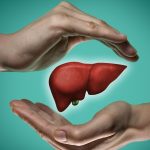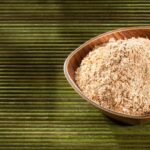Internal hemorrhoids can be defined as sacs full of vessels, which surround the anal canal and are positioned between the mucosa and the sphincter system, contributing to the maintenance of continence.
The presence of internal hemorrhoids , which dilate and shrink to perform their function is therefore completely physiological. However, when the dilation of the haemorrhoidal venous plexus becomes excessive, we begin to speak of haemorrhoidal disease, classified according to the area involved and the level of severity.
There are many mechanical, inflammatory, metabolic and endocrine factors considered to be triggers. The pathology is associated with a series of different symptoms, ranging from simple discomfort to more or less intense pain, with bleeding and in some cases prolapse.
The type of ailment that in most cases is described by hemorrhoid sufferers is a sense of heaviness and painful tension, which often worsens in conjunction with physical exercise and defecation.
Classification of hemorrhoids and internal hemorrhoids
An important distinction for diagnostic and therapeutic purposes is made between internal and external hemorrhoids . As the name suggests, internal hemorrhoids are located inside the anal canal and are therefore visible only by means of a special anoscopic examination.
Easier to spot due to their protrusion from the anus are external hemorrhoids. In both cases, the cause of the painful symptoms is irritation of the mucosa due to excessive swelling of the haemorrhoidal plexus. Depending on the severity of the disease, four different types of hemorrhoids can be distinguished:
- Grade I hemorrhoids, generally not associated with pain, not even at the time of defecation. These are mostly internal hemorrhoids, the most significant symptom of which is bleeding.
- Grade II hemorrhoids which, despite being internal hemorrhoids, escape from the anal canal during the expulsion of feces, causing not only bleeding but also discomfort, more or less intense depending on the case.
- Grade III hemorrhoids, more at risk of prolapse.
- Grade IV hemorrhoids, which in most cases require prompt surgery.
The first two degrees of haemorrhoidal disease are the mildest, so much so that most of the time they benefit from a pharmacological therapeutic approach and some simple dietary precautions.
The lifestyle, in fact, is of fundamental importance not only in the treatment but also in the prevention of this type of disorder.

How to prevent internal hemorrhoids
The most suitable diet in case of internal hemorrhoids must be low in spicy and spicy foods and rich in fiber, fruit and vegetables. This is because while the spices contribute to exacerbate the swelling of the hemorrhoidal plexus and the irritation of the mucous membrane of the anal canal, the fibers instead help to regulate the hive, minimizing episodes of constipation.
A balanced and correct diet can therefore be considered a precious remedy against the problem of hemorrhoids, together with careful personal hygiene, aimed at preventing the development of infections in the anal and genital area with the consequent painful discomfort that follows.

How to treat them
In the event that these simple natural remedies, associated with a possible drug therapy, prove to be not very productive in the resolution of the haemorrhoidal disease, it is possible to resort to a surgical approach. Selective cryotherapy is one of the surgical procedures that can be used in the treatment of hemorrhoids , thanks to its countless advantages.
In addition to eliminating the problem of short-term relapses, which often afflict hemorrhoid sufferers, cryotherapy minimizes the risk of complications, presenting itself as a quick and generally pain-free or extremely limited intervention. (*)






